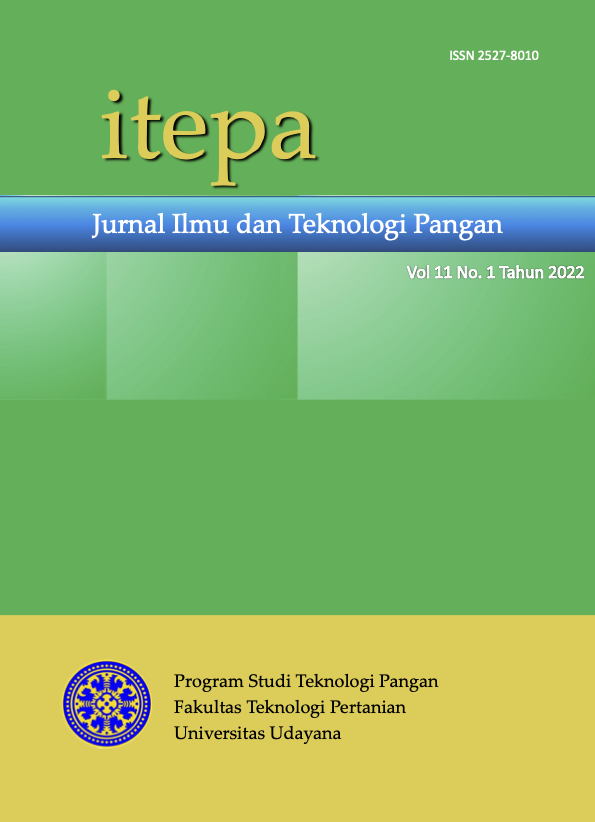Pengaruh Jenis Substrat Terhadap Pertumbuhan Rhizopus oligosporus DP02 Bali dalam Pembuatan Ragi Tempe
Abstract
This research aims to find out the effect of different types of substrates on the growth of Balinese local isolate Rhizopus oligosporus DPO2 in the making of tempeh yeast and to identify the right type of substrate for the growth of R. oligosporus DP02 in making tempeh yeast. This was an experimental research that was analyzed descriptively with type of substrates as the main factor that consists of 5 different flours including: rice, tapioca, corn, wheat and soybeans. Each treatment was repeated 3 times resulting 15 experimental units. The results showed that different types of substrate produced tempe yeast which has R. oligosporus DP02 Bali with dense to very dense mycelium, dry weight of mycelium 0.49 - 0.58 g, total mold 6.97 - 7.77 log CFU / g and water content. 4.47 - 6.01%. Corn flour produces tempeh yeast with the highest growth of R. oligosporus DP02 Bali, with the following characteristics: very dense mycelium, mycelium dry weight 0.58 g, total mold 7.77 log CFU / g and water content 4.55%.





